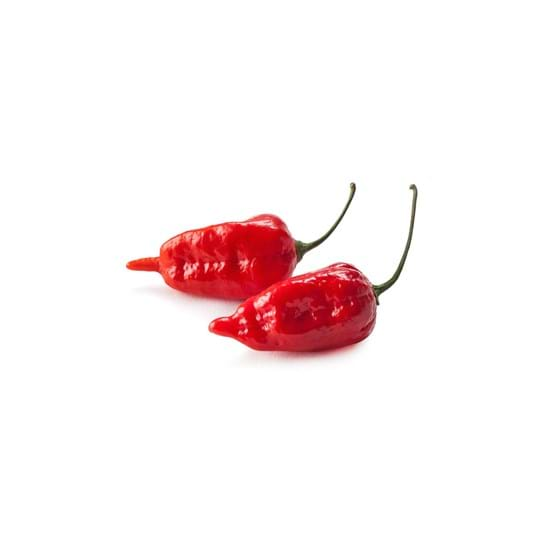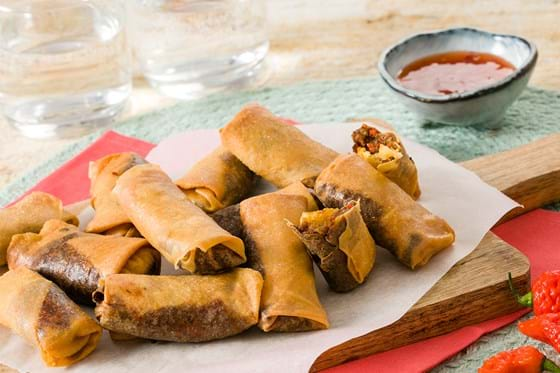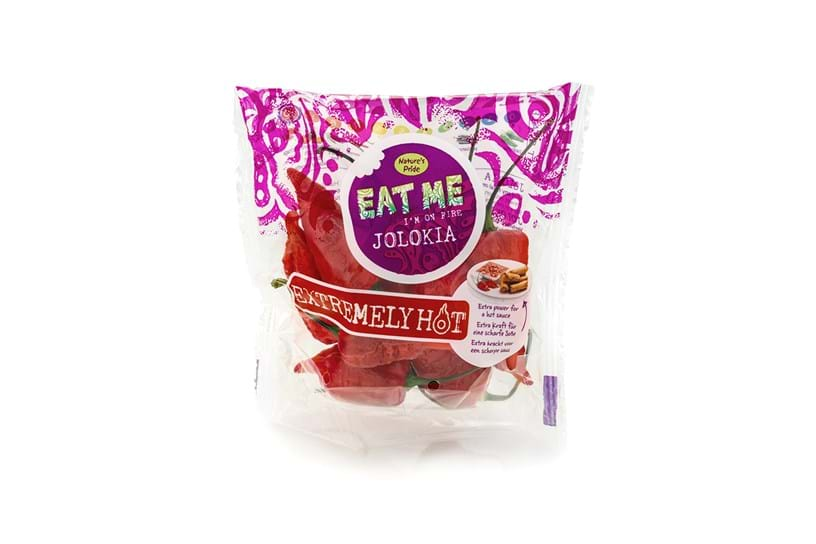Naga Jolokia
Almost the hottest!
- Directly to...

For a long time, the Naga Jolokia had the 'honour’ of being the world's hottest pepper. Its heat has now been exceeded by even spicier specimens on sale, but it is still a pepper to be respected in the kitchen. Our own EAT ME hot scale, which expresses the hotness on a scale of 0-10, the Naga Jolokia can still boast a score of 10. So this modest pepper packs a real punch. How much? You have to dilute one drop of this pepper extract with a million drops before you longer taste its hotness!
The Naga Jolokia originates from the north-east of India. It has a hint of a citrus accent. This pepper is mainly used in chillies and curries. Don't be deceived by its appearance, what this pepper with its wrinkled skin lacks in size is more than made up for in flavour.
Recipes with naga jolokia
The EAT ME Naga Jolokia is mainly used to add spice to dishes. And, with a pepper that scores a 10 on the hot scale, caution is advised. This pepper really shines in a spicy chicken salad. And Naga Jolokia comes into its own in spicy mini spring rolls.
Preparation
Simply wash the pepper first, then finely slice or chop it. Removing the seeds and membranes is also a good idea to temper its spiciness. To avoid too much skin irritation when slicing the pepper, rub your hands with some oil beforehand. After preparation, wash your hands thoroughly with soap and do not rub your eyes.
How to use naga jolokia in the kitchen?
- Cooking
- Baking
- Stir-fry
Storage advice
Naga Jolokia keeps well in the fridge.
Where do Naga Jolokia peppers come from?
EAT ME Naga Jolokia peppers are grown in exotic countries such as Senegal and Mozambique. But we do not always have to source them from so far away: they are also grown in Spain and even in the Netherlands. The peppers start life as seeds. These are raised to create small plants by propagators. Once they are about 40 cm high, the plants are transferred to pots or stone wool slabs for further growth in the field or the greenhouse. After about 6-8 weeks, the harvest can start. The peppers are orange red at this stage.

